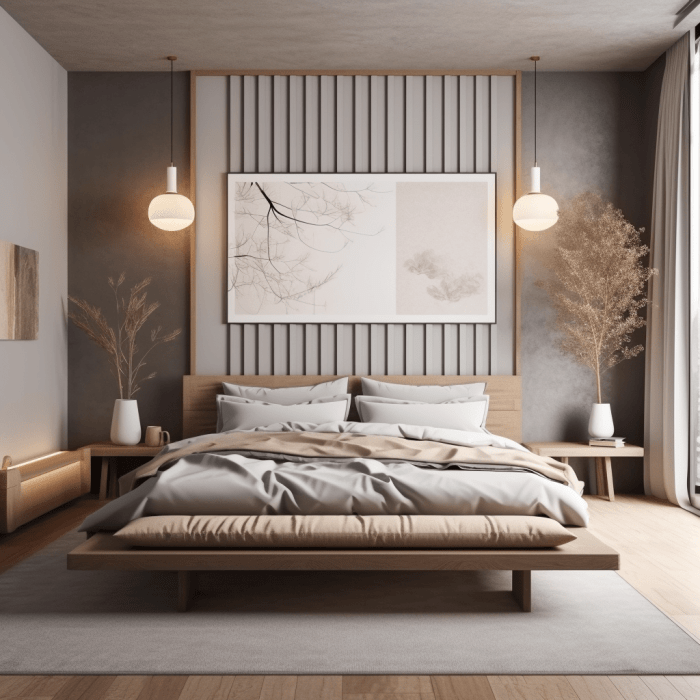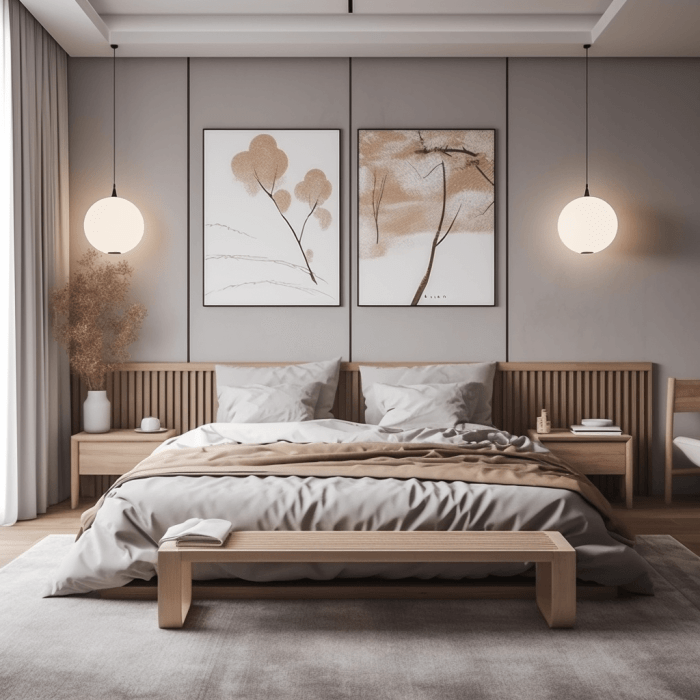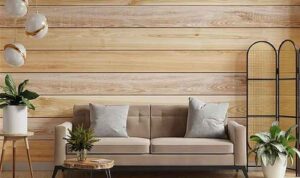Embark on a journey into the world of Japandi bedrooms, where the elegant simplicity of Japanese design meets the cozy minimalism of Scandinavian style. Discover how these two aesthetics blend seamlessly to create a harmonious and serene space that exudes warmth and tranquility.
Delve deeper into the key elements, color palettes, furniture choices, and decor ideas that make a Japandi bedroom a unique and inviting retreat within your home.
Introduction to Japandi Bedroom
A Japandi bedroom is a harmonious fusion of Japanese minimalism and Scandinavian simplicity, creating a serene and cozy space that promotes relaxation and mindfulness.
This style originated from the combination of Japanese design principles centered around simplicity, natural elements, and functionality, with Scandinavian design characterized by clean lines, neutral colors, and cozy textures.
Origins and Characteristics of Japandi Style
- Combination of Japanese and Scandinavian design principles.
- Focus on minimalism, functionality, and comfort.
- Emphasis on natural elements and neutral color palettes.
- Integration of clean lines and cozy textures.
Key Elements of a Japandi Bedroom
- Neutral Color Palette: Utilizing shades of white, gray, beige, and black.
- Natural Materials: Incorporating wood, bamboo, and stone for furniture and decor.
- Minimalist Decor: Keeping clutter to a minimum and opting for simple, essential pieces.
- Functional Furniture: Choosing multifunctional pieces that serve a purpose while maintaining aesthetics.
- Cozy Textures: Adding warmth with soft textiles like wool rugs, linen bedding, and plush cushions.
Color Palette and Materials
The color palette in a Japandi bedroom typically consists of soft, muted tones such as white, beige, grey, and earthy tones like olive green or terracotta. These colors create a calming and harmonious atmosphere, essential in Japanese and Scandinavian design principles.Natural materials play a crucial role in Japandi design, with an emphasis on sustainability and simplicity.
Materials like wood, bamboo, and linen are commonly used to bring warmth and texture to the space. Wood, in particular, is a staple material in both Japanese and Scandinavian design, adding a sense of nature and authenticity to the room.When it comes to the use of light and dark colors in a Japandi bedroom, there is a delicate balance at play.
Light colors are often used as the base to create a sense of airiness and spaciousness, while dark colors are incorporated in small doses to add depth and contrast. This interplay between light and dark shades helps to create a harmonious and balanced aesthetic in the space.
Furniture and Layout
In a Japandi bedroom, the furniture pieces are carefully selected to promote a sense of simplicity, functionality, and harmony.
Essential Furniture Pieces
- Low platform bed with clean lines and natural materials like wood
- Floating shelves or minimalist dressers for storage
- Low-profile bedside tables with simple designs
- Floor cushions or small stools for seating
- Sliding doors or screens for a seamless integration of spaces
Minimalism and Functionality in Furniture Selection
In a Japandi bedroom, minimalism is key in furniture selection to create a clutter-free environment that promotes relaxation. Functionality is also essential, with each piece serving a practical purpose while maintaining a sleek and simple design.
Layout and Arrangement
The layout of furniture in a Japandi bedroom is crucial for achieving a harmonious look
- Creating an open and airy space by leaving plenty of room to move around
- Placing the bed in the center of the room as the focal point
- Utilizing natural light and incorporating plants for a sense of serenity
- Keeping the color palette consistent and using neutral tones for a calming atmosphere
Textures and Decor

In a Japandi bedroom, the use of textures and decor plays a crucial role in creating a harmonious and balanced aesthetic that combines Japanese minimalism with Scandinavian warmth.
Role of Textures
Textures such as rough wood, smooth ceramics, and soft textiles are essential in a Japandi bedroom to add depth and visual interest to the space. Rough wood elements like a reclaimed wood bed frame or a wooden side table bring a natural and organic feel, while smooth ceramics such as handmade pottery vases or minimalist tableware add a touch of elegance.
Soft textiles like linen bedding, wool rugs, and cotton curtains provide a cozy and inviting atmosphere.
Decor Items
- Floor Cushions: Low seating options like floor cushions in muted tones or natural fabrics are perfect for creating a relaxed and informal seating area in a Japandi bedroom.
- Paper Lanterns: Delicate paper lanterns with soft, diffused lighting can add a warm and ambient glow to the room, enhancing the overall tranquil ambiance.
- Simple Artwork: Minimalist artwork, such as black and white photography, abstract paintings, or traditional Japanese prints, can complement the clean lines and simplicity of a Japandi interior.
Wabi-Sabi Influence
The concept of wabi-sabi, which embraces imperfection, impermanence, and authenticity, heavily influences the decor choices in a Japandi bedroom. Embracing natural materials with visible wear and tear, incorporating handmade or artisanal pieces, and celebrating the beauty of simplicity are all key aspects of wabi-sabi that can be seen in the decor of a Japandi space.
Closing Summary

As we conclude our exploration of Japandi bedrooms, it becomes clear that this fusion of cultures and design philosophies offers a timeless and peaceful sanctuary for relaxation and rejuvenation. Embrace the essence of Japandi in your own space and transform it into a haven of balance and beauty.
Top FAQs
What defines a Japandi bedroom?
A Japandi bedroom combines the minimalism of Scandinavian design with the simplicity and elegance of Japanese aesthetics, resulting in a harmonious and tranquil space.
What materials are commonly used in a Japandi bedroom?
Natural materials like wood, bamboo, and linen play a key role in Japandi design, adding warmth and texture to the space.
How can wabi-sabi influence decor choices in a Japandi bedroom?
The concept of wabi-sabi, embracing imperfection and impermanence, encourages the use of simple and natural decor items that enhance the organic and serene feel of a Japandi bedroom.












